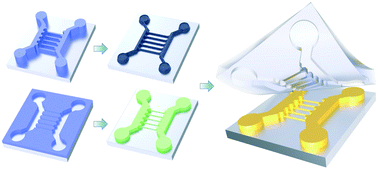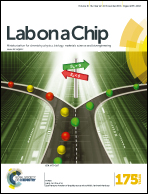Unconventional micro-/nanofabrication technologies for hybrid-scale lab-on-a-chip
Abstract
Micro-/nanofabrication-based lab-on-a-chip (LOC) technologies have recently been substantially advanced and have become widely used in various inter-/multidisciplinary research fields, including biological, (bio-)chemical, and biomedical fields. However, such hybrid-scale LOC devices are typically fabricated using microfabrication and nanofabrication processes in series, resulting in increased cost and time and low throughput issues. In this review, after briefly introducing the conventional micro-/nanofabrication technologies, we focus on unconventional micro-/nanofabrication technologies that allow us to produce either in situ micro-/nanoscale structures or master molds for additional replication processes to easily and conveniently create novel LOC devices with micro- or nanofluidic channel networks. In particular, microfabrication methods based on crack-assisted photolithography and carbon-microelectromechanical systems (C-MEMS) are described in detail because of their superior features from the viewpoint of the throughput, batch fabrication process, and mixed-scale channels/structures. In parallel with previously reported articles on conventional micro-/nanofabrication technologies, our review of unconventional micro-/nanofabrication technologies will provide a useful and practical fabrication guideline for future hybrid-scale LOC devices.

- This article is part of the themed collection: Lab on a Chip Recent Review Articles

 Please wait while we load your content...
Please wait while we load your content...